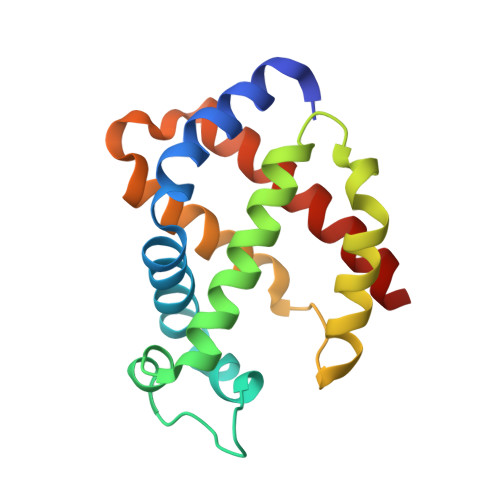Engineering the internal cavity of neuroglobin demonstrates the role of the haem-sliding mechanism.
Avella, G., Ardiccioni, C., Scaglione, A., Moschetti, T., Rondinelli, C., Montemiglio, L.C., Savino, C., Giuffre, A., Brunori, M., Vallone, B.(2014) Acta Crystallogr D Biol Crystallogr 70: 1640-1648
- PubMed: 24914975
- DOI: https://doi.org/10.1107/S1399004714007032
- Primary Citation of Related Structures:
4MU5, 4NZI, 4O1T, 4O2G, 4O35 - PubMed Abstract:
Neuroglobin is a member of the globin family involved in neuroprotection; it is primarily expressed in the brain and retina of vertebrates. Neuroglobin belongs to the heterogeneous group of hexacoordinate globins that have evolved in animals, plants and bacteria, endowed with the capability of reversible intramolecular coordination, allowing the binding of small gaseous ligands (O2, NO and CO). In a unique fashion among haemoproteins, ligand-binding events in neuroglobin are dependent on the sliding of the haem itself within a preformed internal cavity, as revealed by the crystal structure of its CO-bound derivative. Point mutants of the neuroglobin internal cavity have been engineered and their functional and structural characterization shows that hindering the haem displacement leads to a decrease in CO affinity, whereas reducing the cavity volume without interfering with haem sliding has negligible functional effects.
Organizational Affiliation:
Istituto Pasteur-Fondazione Cenci Bolognetti and Istituto di Biologia e Patologia Molecolari del CNR, Dipartimento di Scienze Biochimiche `A. Rossi Fanelli', Sapienza Università di Roma, Piazzale A. Moro 5, 00185 Rome, Italy.


















